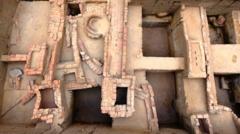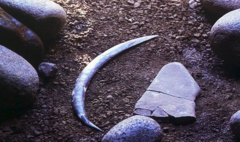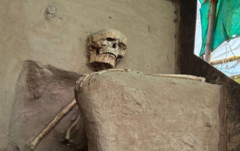In the realm of archaeology, few figures stand as tall as Rakhaldas Banerjee, whose work led to the discovery of Mohenjo-daro in the early 1900s. This city, located in present-day Pakistan, was a crucial part of the vast and sophisticated Indus Valley Civilization that thrived during the Bronze Age, spanning from northeastern Afghanistan to northwestern India. Despite his monumental contribution to history, Banerjee remains a largely unrecognized champion, overshadowed by controversies that marred his career.
As an archaeologist with the Archaeological Survey of India (ASI) during British colonial rule, Banerjee embarked on extensive expeditions across the Indian subcontinent, uncovering artifacts and ancient scripts. His most significant achievement was the excavation of Mohenjo-daro, famously translated to "mound of the dead men." However, his discoveries did not receive the credit they deserved as reports on the site went unpublished, and ultimately, ASI's then-director John Marshall took much of the acclaim for Banerjee's findings, rendering him an "insignificant footnote" in history, as pointed out by fellow archaeologist PK Mishra.
Banerjee's inability to adhere to the bureaucratic norms of the colonial system often led to friction with his superiors. His strong-willed nature manifested in actions like attempting to acquire museum artifacts without permission, which ultimately hindered his career progression. His independent pursuit of truth, while admirable, was accompanied by a lack of tact, as highlighted by historian Nayanjot Lahiri.
Despite these challenges, Banerjee's academic journey began at a young age, driven by a rich familial heritage and an insatiable thirst for history. By 1910, he joined ASI as an excavation assistant, quickly rising through the ranks to oversee significant excavations, most notably at Mohenjo-daro in 1919. Through his excavation efforts, he uncovered invaluable insights about the ancient civilization, including ancient seals and links to Harappa, thereby expanding the understanding of the Indus Valley’s extensive civilization.
His tenure, however, was not to last. By 1924, financial constraints and administrative disputes led to his transfer away from Mohenjo-daro, leaving behind a site that he had painstakingly uncovered. Subsequent mismanagement and charges of idol theft further complicated his standing within ASI, leading to his eventual resignation in 1927.
In the years following his departure, Banerjee faced financial difficulties and briefly held a professorship at Banaras Hindu University before his untimely death at just 45 years old. Today, scholars in Bengal continue to acknowledge his contributions, while the broader world remains oblivious to the man who unearthed Mohenjo-daro, leaving his legacy marred but not forgotten.






















